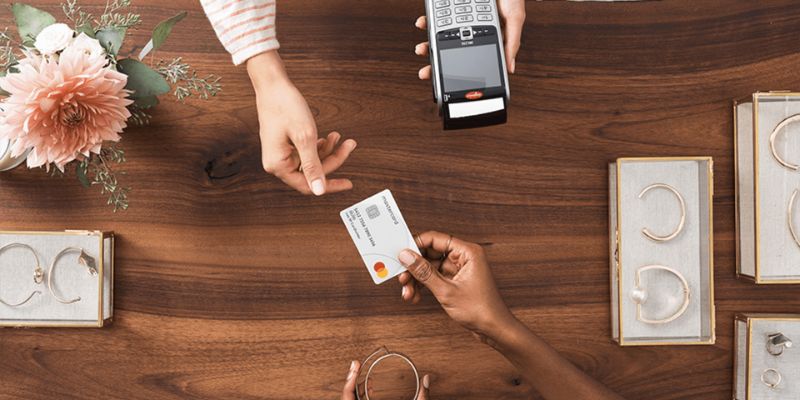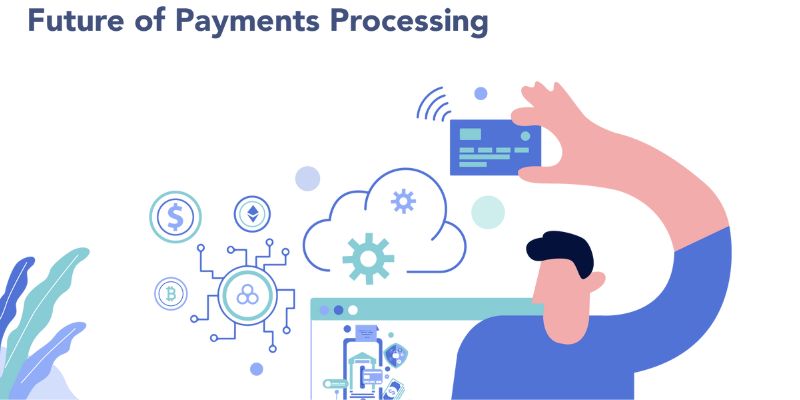Breaches of digital payment platforms have heightened worries about the safety of our money online. As an expert in digital security, I cut through the fog of fear to shine a light on what makes these platforms a target, and how your hard-earned cash might be at risk. I’ll guide you through the murky waters of mobile wallet vulnerabilities and the harsh realities of cybersecurity flaws. We’ll dissect real-life cases of credit card data in the wrong hands and the fallout from phishing scams. Armed with knowledge, you can bolster your defenses, enforce two-factor authentication, and demand encryption that meets standards. After a breach, I’ll show you how to tackle the aftermath and protect your financial future. Don’t let the hacker’s paradise become your nightmare; understanding the risks is the first step to safeguarding your digital wallet.
Understanding the Risks: What Makes Digital Payment Platforms Vulnerable?
The Anatomy of Mobile Wallet Vulnerabilities
Think of your mobile wallet as a digital safe. We all believe our money and personal details inside are secure. But just like having a strong lock, digital payment platforms need strong security to keep out the bad guys. Sadly, when security isn’t tight, hackers find ways to break in. This can lead to your private info being stolen. That’s right, your credit card details, money, and even your identity can be at risk. Because of these risks, I take my role very seriously to help you understand and avoid these threats.
Some mobile wallet vulnerabilities arise from simple errors in the wallet’s code. These flaws act like hidden doors that hackers love to find and sneak through. Other times, the weakness may be in how the wallet checks who you are. Without strong checks like two-factor authentication, someone could pretend to be you and take your money. It’s scary but true.
How Cybersecurity Flaws Lead to Online Payment Fraud
In the world of online shopping, keeping your digital cash safe is a big deal. When cybersecurity falls short, sneaky cyber crooks can steal, causing what we call online payment fraud. This includes any illegal actions where someone takes your hard-earned cash through deceit or tricks.
One common trick is phishing. It’s not fishing like in a lake, but like laying bait in emails or texts. Phishing tricks people into sharing their payment details. Another sneaky move is when hackers break into payment gateways. Think of it as if someone found a way to control all the cash registers in your favorite store. That’s bad news for anyone who shopped there!
And let’s not forget about the shops themselves. They handle lots of purchases, right? So, when their systems, like point-of-sale, get infiltrated, it’s not just one or two people at risk. It’s many, sometimes thousands. The result? A lot of lost trust and lost dollars.
Finally, just because you can’t see or touch it, doesn’t make the risk of data compromise through contactless payment any less real. It’s like a thief having a magic key that doesn’t need to touch the lock to open it.
Now, on to a very important part: if your information does get taken, you must report unauthorized transactions fast. This way, the bad effect on your wallet might be less. It’s also good to know that shops and platforms should have systems that notice odd buying activity. This way, they can stop the bad acts before they go too far.
Keeping our eyes open and knowing what to watch out for helps a lot. By recognizing these weak spots and learning what leads to fraud, we can all work towards staying one step ahead of the hackers. As your cybersecurity expert, I’m always here to help increase that awareness and keep your money safer in this digital age.

The Real Stories: Examining Recent High-Profile Payment Security Breaches
Case Studies of Credit Card Data Compromises
Money in the bank feels safe, right? But hackers target our cash, too. Even big names get hit hard. Take the case of a famous store. They had a huge breach. Hackers got in through their heating system. Yes, their heating system. They stole credit card details from the store’s point-of-sale system. Millions felt the sting of this credit card data compromise.
In another story, a well-known restaurant chain faced a breach. They found malware, which is harmful software, in their payment system. This time, hackers targeted the system that records card swipes. Customers’ card info was stolen. People were mad, scared, and hurting.
These cases show that cybersecurity in fin-tech is no small thing. We see big companies and everyday shoppers hit by these crimes. And we see that different paths exist for hackers. They can strike through heating systems or directly on card swipe machines.
The Impact of Phishing Attacks on Payment Apps
Now let’s talk about the sneaky trick called phishing. Phishing is when fraudsters pretend to be someone you trust. They send a fake message to steal your info. Often, these messages look real but lead to trouble.
Consider the coming of payment apps. We enjoy their speed and ease. But they come with risks. Just recently, a popular mobile wallet app got hit. Users received fake messages. These messages had tricks in them, meant to steal login details.
Lots of people fell for it. They gave away their info without a fight. This shows that phishing attacks on payment apps are on the rise. And they do a lot of harm. They break into our personal space and trick us. Plus, they can take our money fast.
Phishing also opens doors for other crimes, like identity theft. Thieves use stolen details to pretend they are you. And that can cause a whole world of hurt.
Each time there is a digital payment security breach or mobile wallet vulnerability, it shakes our trust. It proves that we must watch our steps online. Online payment fraud is a real concern, every day, for everyone.
Mobile payment interception is like someone grabbing your wallet. But this is not just any wallet; it’s your digital wallet. It holds your payment details for quick taps and online shopping. And when hackers tap in, they hit you where it hurts. They can run away with your money or sell your data. They can leave you or a business to face big losses and long hours to fix things.
Remember, every swipe, tap, or click could be a way in for thieves. In the digital world, we’re fighting invisible enemies, who are smart and sneaky. But don’t worry; later in the article, we’ll talk about how to fight back. For now, just know that breaches can happen to anyone, anywhere. And the stories of those who faced it remind us to stay sharp and secure.

Protecting Your Assets: How to Secure Your Digital Transactions
Implementing Robust Two-Factor Authentication
You want to keep your money safe, right? Here’s how. Two-factor authentication (2FA) adds a second check to make sure it’s really you. Think of it like a double lock. When you log in, you put in your password. That’s one lock. Then, the site or app asks for a second key. It could be a code that only you can get on your phone. This way, even if someone has your password, they can’t get in without that second code.
Now, you might ask, “What if that’s not safe enough?” That’s a smart question. No lock is perfect. But with 2FA, it’s much harder for bad guys to get to your stuff. They would need both your password and access to your second key. That’s why adding 2FA to your accounts is one of the best steps you can take. It’s like having a guard ask for a secret handshake after you’ve shown your ID.
To set it up, you usually go to the security settings of your account. Then, you pick a second way to prove it’s you. It could be a text message, an email, or an app that makes codes. Once you’ve set it up, every time you sign in, you’ll use both your password and the second check.
Ensuring Encryption and PCI DSS Compliance in E-commerce
Now, let’s talk about keeping your card info safe when shopping online. When you buy stuff on the internet, your card info goes on a trip from your device to the store’s bank. Encryption is like putting that info in a super-secure box for the trip. Only the right person has the key to open it.
Every online store should use encryption. It’s part of the rules called PCI DSS. These rules make sure stores handle card info the right way. They include things like having a firewall and testing their systems. These rules help protect you from bad guys who try to steal card data.
But what if a store doesn’t follow the rules? If they don’t and something goes wrong, it can be a big problem. They might get fined or lose the right to take cards. For us, the shoppers, it means our info could end up in the wrong hands.
How do you know if a site is safe? Look for “https://” in the web address. That “s” means it’s secure. Also, some sites show a little padlock icon near the web address. That padlock is a good sign. It means your info is locked up tight during its trip.
To wrap up, keeping your digital cash safe is all about that double-check – the 2FA, and making sure you shop with secure, rule-following stores. When your money’s online, think of these steps as your armor. They won’t let anything through that shouldn’t get through. Stay sharp, stay safe, and keep your digital dollars locked down tight.

The Aftermath: Reporting and Recovering from Payment Platform Breaches
Steps for Consumers Facing Compromised Banking Information
So your banking info got hit by hackers. What now? First, report it fast! Call your bank right away. Next step, change those passwords. Make them tough to guess! Check your account for strange activity. See something odd? Tell your bank pronto. Keep a close eye on your credit report too. This helps catch any sneaky stuff early. It’s smart to use alerts on your account. They tell you when money moves in or out.
Best Practices for Merchants to Mitigate Financial Loss from Cyber Attacks
Merchants, listen up! Cybersecurity in fin-tech can save your business. First, make sure you understand PCI DSS compliance. It’s not just a fancy term; it’s your shield against data thieves. Rethink your fraud detection systems. They should be as sharp as a tack. Next, update your payment software security patches regularly.
Got a website for selling stuff? Protect that too. Add layers of shields around your customer’s data. Also, teach your folks about phishing. If your team can spot a scam, half the battle is won.
When something bad happens, like a hack, have a plan ready. This means knowing who to call and what to do step by step. Time is money, and in case of a breach, it’s a race to stop the loss. Remember, being quick and smart with responses keeps customers’ trust.
The key here is to watch out for trouble and act fast when it shows up. Keep learning about new risks and how to block them. Security’s a big deal for shops and shoppers alike. It’s a job that’s never done, as crooks get smarter every day. Merchants, stay sharp and stay safe!
In this post, we looked at how digital payments can get risky. We saw how weak spots in mobile wallets could let bad guys in and learned that when security messes up, payment fraud can happen. Then, we went through real stories of when credit card info got stolen and how phishing attacks trick payment apps.
Next, we talked about keeping your online money safe. You can use two-step checks and make sure you follow security rules, like PCI DSS, when you shop online. Lastly, we covered what to do if your payment details get hit. For folks with stolen banking info, there’s a way to fix it. Businesses also have smart moves they can make to protect their money after an attack.
Remember, when you pay online, stay sharp. Use the tips we talked about to keep your money safe. This way, you can dodge the bad stuff and enjoy the perks of digital payments without the worry. Stay safe out there!
Q&A :
What are the common types of breaches in digital payment platforms?
Digital payment platforms can be vulnerable to various types of security breaches. Common types include unauthorized transactions, phishing attacks, exploitation of software vulnerabilities, data theft, and interception of payment information. Ensuring that robust encryption methods and security protocols are in place is essential for mitigating these risks.
How can consumers protect themselves from breaches on digital payment platforms?
Consumers can protect themselves by following best practices such as using strong, unique passwords, enabling two-factor authentication, regularly monitoring transaction histories, and being cautious of phishing scams. It’s also advisable to use trusted payment platforms with a strong track record for security.
What should I do if I suspect a breach in my digital payment account?
If you suspect your digital payment account has been breached, immediately notify the payment service provider, change your account passwords, monitor your financial statements for any unauthorized transactions, and consider alerting your bank. Additionally, you may want to report the breach to relevant authorities to help prevent further incidents.
Are digital payment platforms obligated to report breaches?
Yes, digital payment platforms are generally obligated to report security breaches, especially when they involve consumer data. The requirements for reporting can vary based on jurisdiction and the severity of the breach. Companies are often required to inform affected customers and may need to report to regulators within a specific time frame.
What measures do digital payment platforms take to prevent breaches?
Digital payment platforms employ a variety of measures to prevent breaches, including implementing strong encryption, conducting regular security audits, complying with security standards like PCI DSS, offering secure payment gateways, and using fraud detection algorithms. Additionally, they may have incident response plans ready to rapidly address any potential breaches.

